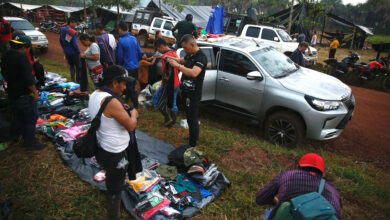Life of Vietnam War ‘perfect spy’ to grace cinema screens

By Eric San Juan
Ho Chi Minh City, Vietnam, Jan 27 (EFE).- The life of the Vietnamese spy Pham Xuan An, who throughout the Vietnam War used his position as a trusted local journalist in the United States to provide decisive information, will be made into a film by adapting a book about his life that will begin shooting this year.
“It will be distributed all over the world and it will be shot above all in Vietnam, although I hope it will also be in California. They are writing the script and it will be released in three years,” Larry Berman, author of the 2008 book Perfect Spy, told EFE.
Last year the author signed a contract with the production company BHD Co. to make the film, which will be directed by Vietnamese director Charlie Nguyen.
Not far from the cafeteria in Ho Chi Minh City (former Saigon), where Berman spoke, Pham Xuan An carried out his spy work for almost two decades in front of the top staff of American journalists and military officials, who never suspected the highly educated Vietnamese reporter.
The story of An (1927-2006), one of the most fascinating of the war, began in 1956, when Vietnam was divided in two after the defeat of French colonizers and the communist north needed information about the US, the new foreign power sponsoring the south.
Due to his ability for languages and personal relationships, An was chosen to travel to the US to live there and understand the way of being and thinking of the country that was already emerging as the next warlike enemy of communist Vietnam.
His sharp intelligence and skills for human relations in a Saigon full of Americans allowed him to hitch his plan: Edward Lanslade, head of the US military mission in Vietnam, became his mentor and sponsored his trip to California to study journalism.
“He was hiding in plain sight,” sayid Berman, a professor emeritus at the University of California.
A model student, An was seduced in California by a lifestyle very different from that of his native Saigon, made friends, received awards for his academic brilliance and learned all the secrets of a way of doing free journalism that he fell in love with.
His idyll with the US ended after two years when his superiors called him to return to his country and put into practice the knowledge acquired on his journey US.
Back in Vietnam, he worked as a correspondent for wire service Reuters, Time magazine and the New York Herald Tribune, became the most respected Vietnamese journalist and a reference for some major American reporters, who often used his information.
At the same time, he provided this information to journalists and dispatched with senior leaders of the US detachment, giving his side messages written in invisible ink and camouflaged in edible rolls he always left under the same tree and that a street vendor collected to deliver to Viet Cong leaders.
With this system, he provided vital information to the communist side, among which Berman highlights the one that gave revolutionary forces a resounding victory in Ap Bac in 1962 and the Tet offensive, which in 1968 marked a turning point in the war seven years later.
It was then that An’s role was revealed to the astonishment of the dozens of Americans who had dealt with him and with whom he had formed a friendship that seemed sincere.
In the last days of April 1975, before the fall of Saigon, An helped some Vietnamese friends who would have suffered reprisals escape to the US by helicopter.
“It was the time when his mask could be removed, but after so many years, it had become his own mask,” said Berman, who met An by chance in Saigon at the beginning of this century and with whom he had long conversations until his death from pulmonary emphysema in 2006. EFE
esj/lds





